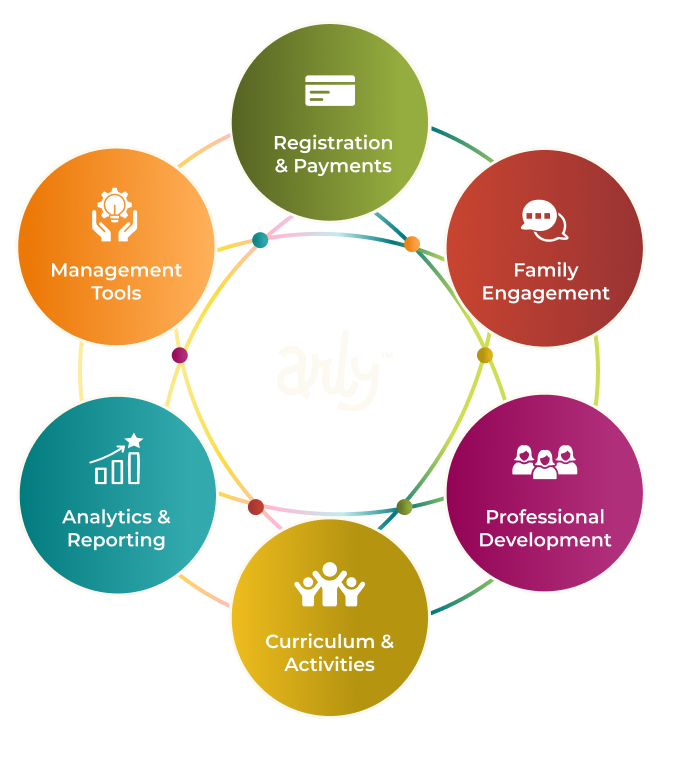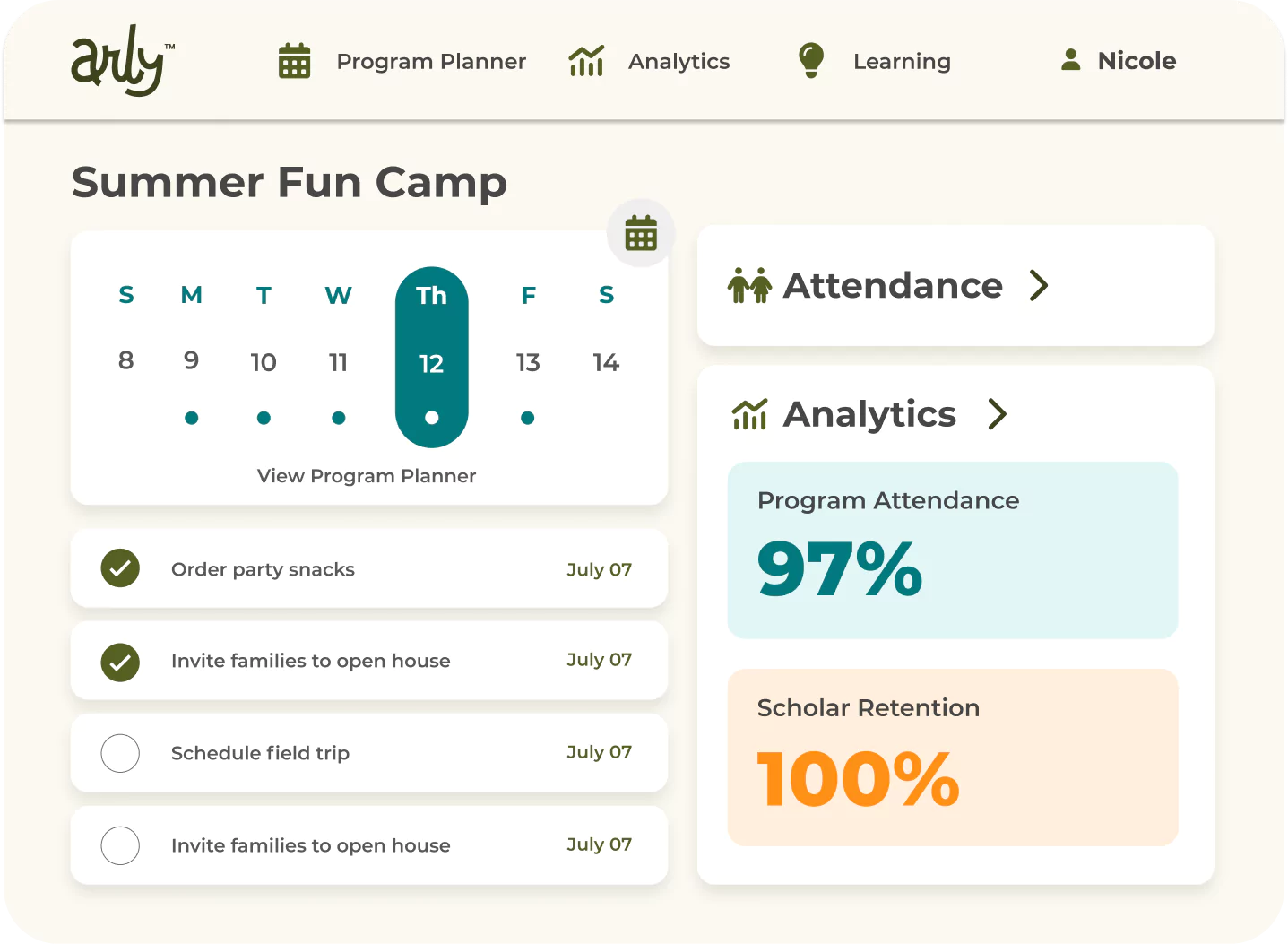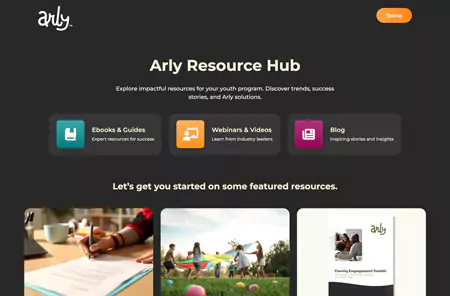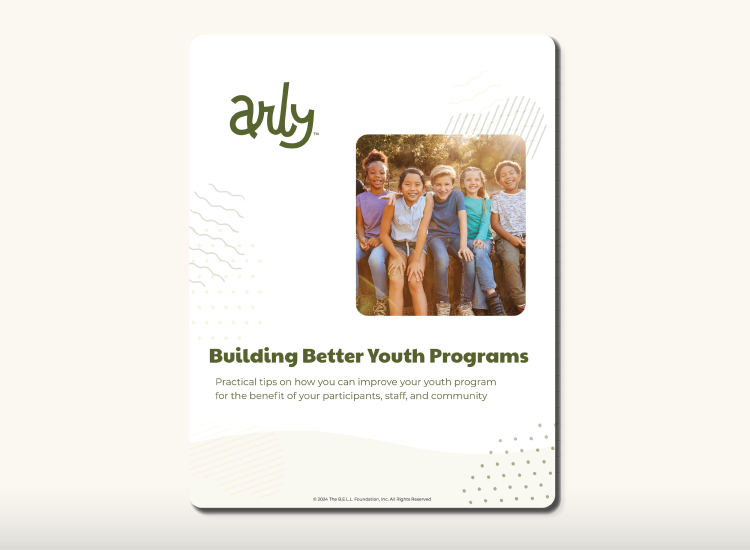10 Icebreakers for Youth Programs + Free Downloads
By Arly Communications on April 29, 2024
Fostering close communities enhances positive learning environments in youth programs. No matter how long or short your program, taking some time at the beginning to get to know kids and help them feel comfortable with each other is a worthwhile investment. Especially when you have a limited amount of time, icebreakers can help you start fostering connections and building community. Here are 10 fun icebreaker games for kids to try.
1. Candy Color Q&A
Go around the room and have kids take turns picking a piece of candy out of a bowl one at a time. (This game is commonly done with M&Ms or Skittles, but you can opt for wrapped candies such as Starbursts or Jolly Ranchers.)
The color (or flavor) they pick will dictate what type of question they answer about themselves. For example, a red candy may mean the child shares what they want to be when they grow up, a blue candy may prompt the child to share something they love about themselves, and so on. Print our downloadable worksheet for a ready-to-go game.
2. Buddy Interviews and Introductions
Talking one-on-one is often less intimidating than whole-group introductions, especially for introverted kids. Try pairing off kids, either by simply listing off names or handing out pairs of cards and having everyone mingle to find their match.
Once kids meet up with their buddy, give them time to talk about themselves. You may provide a list of basic interview questions for them to ask each other. Then, come back together as a whole group and take turns having kids introduce their buddy, sharing a few things they learned about them with the rest of the group.
3. Who Said It
Have all your kids respond to the same prompt, writing their answer down on a slip of paper. For example, you might ask: “What’s your favorite movie?” Or: “What’s a food you can’t stand?”
Then shuffle up the answer slips, read them aloud one at a time, and let the guessing begin. Trying to guess who watches The Rescuers on repeat or who can’t stand the taste of bananas can be a fun and silly way to get to know each other.
It’s up to you how structured you want this game to be. Kids may shout out their guesses at random before allowing the child who wrote the answer to reveal themselves. Or you could take turns allowing kids to take a guess until someone gets it right.
For older kids, read off all the answers once at the beginning, and then have them take turns recalling all the possibilities and making a guess. If they get it right, the person they identified joins them on a team, and they can work together to make another guess. Once they get one wrong, play moves to the next kid to make a guess, and the cycle continues until all answers have been identified.
4. Pick a Side
If you’re looking for icebreaker activities to engage students physically, as well, “Pick a Side” is a fun option to try. Have kids start out by standing together in the middle of the room. Now, name either-or choices or scenarios and have kids move to one side of the room to indicate their choice. For example, you could say, “What’s better, chocolate or vanilla? Chocolate on the left side of the room, vanilla on the right.” Watch the fun unfold as kids find points of commonality with their classmates.
5. Naming Favorites
An open prompt asking kids to share something interesting about themselves can feel a bit overwhelming. Limiting it to a specific question can make it easier. For this icebreaker, pick a category and ask each kid to share their favorite.
You can even let the kids vote on which prompt they all want to answer. Maybe it’s their favorite candy bar, movie, book, TV show, school subject, or color. The possibilities are endless. Go around the room, with each kid naming their favorite and watch as kids say, “I love that one too!” and start chatting about each other’s answers.
6. Name Tag Art Project
Name tags are a great way to help with introductions and help kids (and teachers!) address each other by name throughout the year. Instead of a generic name tag, why not turn it into a fun art project? Have kids create name tags and include a picture or design along with their names. Ask kids to introduce themselves to the group and describe how their design represents who they are or an interest they have.
7. Deserted Island Packing List
Hypothetical scenarios are a fun way to get kids talking. For this icebreaker, have kids work in small groups to decide what three items they would take to a deserted island. You can make silly rules to add an element of fun. For example, maybe all the items have to start with a certain letter, or they all need to fit into a grocery bag. Once the time is up, have the groups come back together, and have one person from each group share their group’s packing list.
8. All-in-Good-Fun Debate
Some icebreaker games for kids can also help them develop life skills like critical thinking and communication. Try picking a non-serious debate topic, such as “Is a hot dog a sandwich?” or check our list of fun debate topics. Write the topic or question on the board, divide kids into groups, and give them some time to brainstorm together before going head to head against the opposing side.
It typically works best to assign the groups positions on the topic so you can be sure both sides are represented. For example, you could tell one group they’ll be arguing for why a hot dog is indeed a sandwich while the other group must make the case that a hot dog is not at all a sandwich.
Use a timer to give each side a chance to make their case and provide a rebuttal against the opposing side. If you host more than one debate, you can have the kids who are audience members shout out who they believe to be the winner.
9. Line Up
If you want to get kids moving and mingling, tell them to line up in order of their birthdays, with the earliest January birthday on one end all the way to the last birthday in the calendar year. Kids talk amongst themselves to figure out where they should fall and learn something about each other in the process.
Add an additional challenge for older kiddos by having them take on this activity without speaking. They’ll have to get creative to figure out each other’s birthdays and form an accurate lineup.
10. Two Truths and a Lie
A classic icebreaker that works especially well for older kids is “two truths and a lie.” To play this game, have kids come up with two real facts and one made-up fact about themselves. Be sure to give enough time for kids to come up with these facts without feeling put on the spot.
Take turns having each kid provide their three “facts” and let their classmates or fellow campers guess which fact is a lie. For example, a kid may say that they’ve been to three continents, they’ve never tried spaghetti before, and they have five siblings. Once they’ve shared all three facts, have the other kids raise their hands if they think it’s the first fact, then the second fact, and then the third, before having the person reveal the lie.
Break the Ice and Build Community
Icebreaker games for kids aren’t just a valuable tool for introductions during Week 1. They’re also fun to incorporate into your programming throughout the term when kids need an extra dose of fun or you have an extra few minutes left in the day and want to boost student engagement. Why not take the opportunity to let kids and teachers build closer connections?
Starting out on the right foot begins long before the first day or week. Make sure you’re carefully planning out all the details to ensure a smooth day 1.






%20(13).png)

%20(69).png)
%20(26).png)
%20(56).png)